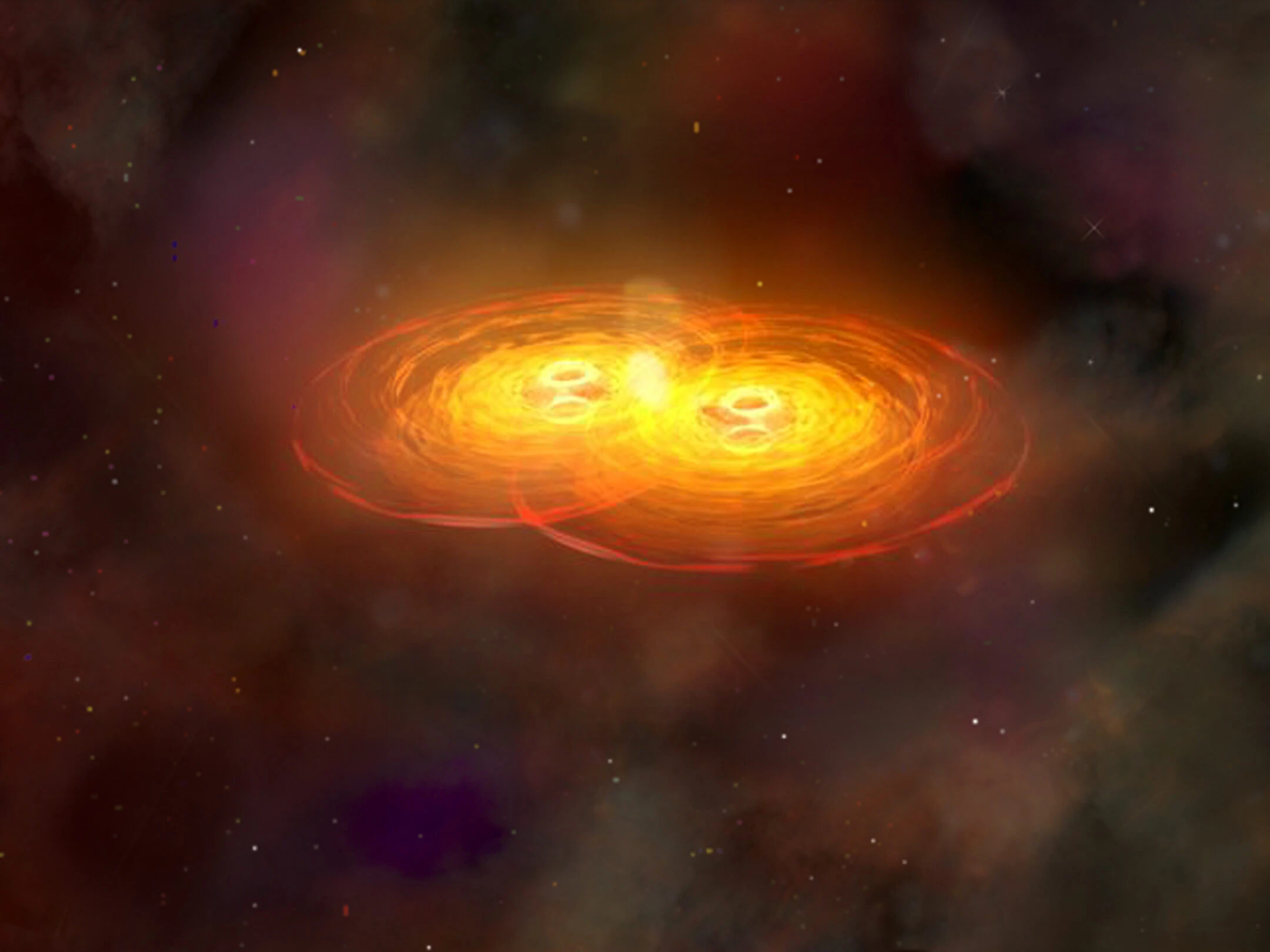
Have you ever wondered what the universe is really made of at its tiniest scale? Scientists have puzzled over this question for centuries. Today, one bold idea stands out: Loop Quantum Gravity, or LQG for short. This theory aims to explain how space and time work at the smallest levels—think billionths of a billionth of a meter. Unlike other complex ideas in physics, LQG offers a fresh way to connect gravity with the strange world of quantum mechanics. Let’s dive into this fascinating concept and see what it reveals about our universe.
What Is Loop Quantum Gravity?
At its core, Loop Quantum Gravity is a theory that blends two giant pillars of physics: Einstein’s general relativity and quantum mechanics. General relativity tells us how gravity shapes the universe on a grand scale—like planets orbiting stars. Meanwhile, quantum mechanics rules the tiny realm of atoms and particles. For decades, these two ideas clashed. Scientists struggled to unite them because gravity behaves differently when you zoom in to super-small distances.
Here’s where LQG steps in. It suggests that space itself isn’t smooth or continuous, as we might imagine. Instead, space comes in tiny, discrete chunks—like building blocks too small to see. Picture a fabric woven from loops of energy. These loops form the structure of space and time. Consequently, LQG gives us a new lens to view the universe, one where even emptiness has a texture.
Why Do We Need LQG?
You might ask, “Why bother with a new theory?” After all, general relativity works great for big things like black holes, and quantum mechanics nails the behavior of particles. However, problems arise when we try to describe extreme situations—like the center of a black hole or the Big Bang’s first moments. In these cases, gravity and quantum effects collide, and our current tools fail.
For example, general relativity predicts that black holes squeeze matter into an infinitely small point called a singularity. That sounds wild, right? Quantum mechanics, on the other hand, says nothing can shrink that small without breaking the rules. LQG steps up to fix this mess. It proposes that space has a limit—a smallest possible size. As a result, singularities might not exist. Instead, the universe stays finite, even at its most extreme.
How Does Loop Quantum Gravity Work?
Let’s break it down. In LQG, scientists use mathematical “loops” to describe space. These loops aren’t physical strings you can touch. Rather, they’re abstract tools that map how gravity and quantum effects intertwine. By weaving these loops together, researchers create a network called a “spin network.” This network acts like a skeleton for space itself.
Think of it this way: If you zoom in far enough, space isn’t a smooth sheet. It’s more like a pixelated image, built from tiny dots. Each dot connects to others through these loops. Over time, these connections shift and evolve, giving us the flow of time. For instance, when a star collapses into a black hole, LQG predicts the process stops at a tiny but measurable size—not an infinite crunch.
One cool twist? LQG doesn’t rely on extra dimensions or mysterious particles, unlike its rival, string theory. It sticks to what we already know about space and time, then adds a quantum twist. That simplicity makes it appealing to many physicists.
The Big Rival: String Theory vs. LQG
Speaking of rivals, let’s compare LQG to string theory. Both aim to unite gravity and quantum mechanics, but they take wildly different paths. String theory imagines the universe as a symphony of tiny, vibrating strings. These strings exist in extra dimensions—up to 10 or 11, depending on the version. It’s a mind-bending idea, and it’s produced some amazing math.
In contrast, Loop Quantum Gravity keeps things grounded. It doesn’t need extra dimensions. Instead, it reworks our understanding of the four dimensions we already experience. While string theory predicts particles like the graviton to carry gravity, LQG says gravity emerges from the fabric of space itself. Which one’s right? Scientists don’t know yet. For now, both theories inspire debate and push research forward.
What LQG Says About the Big Bang
One of the most exciting parts of LQG is its take on the Big Bang. Most of us picture the universe starting with a massive explosion from a single point. However, that “point” poses a problem—it’s another pesky singularity. LQG offers a different story. It suggests the Big Bang wasn’t the beginning but a “bounce.”
Here’s the idea: Before our universe expanded, it might have been contracting. At some point, it hit a minimum size—thanks to those tiny space chunks—and bounced back outward. This “Big Bounce” replaces the singularity with a moment of transition. Scientists love this because it avoids infinity and keeps the math manageable. Plus, it hints that our universe might be part of a bigger cycle of growth and collapse.
Testing Loop Quantum Gravity
Now, you might wonder, “Can we prove LQG is real?” That’s the tricky part. Because it deals with such tiny scales, testing LQG directly is tough. Still, scientists aren’t giving up. They’re hunting for clues in places like cosmic background radiation—the faint glow left over from the Big Bang. If LQG is right, this radiation might show tiny patterns or glitches tied to the chunky nature of space.
Another spot to look? Black holes. LQG predicts that as black holes evaporate (thanks to a process called Hawking radiation), they leave behind traces of their smallest size. Future telescopes or particle detectors might catch these hints. Until then, researchers rely on math and computer simulations to refine the theory. Progress is slow, but the stakes are high.
Challenges Facing LQG
Of course, no theory is perfect. Loop Quantum Gravity faces some big hurdles. For one, it’s not fully complete. While it describes space and time well, it struggles to include matter—like particles and forces—in a seamless way. Physicists are working on this, but it’s a tough nut to crack.
Additionally, LQG’s math is complex, even for experts. Solving its equations takes serious brainpower and computing muscle. Some critics argue it’s too abstract, lacking the clear predictions of string theory. Others point out that without hard evidence, it’s just a beautiful idea. Despite these challenges, LQG keeps gaining fans for its bold simplicity.
Why LQG Matters to Us
So, why should you care about Loop Quantum Gravity? Beyond the science, it’s a window into how we understand reality. It challenges us to rethink space, time, and the universe’s deepest mysteries. Moreover, it shows how human curiosity drives progress. Scientists aren’t afraid to tackle the unknown, and that spirit shapes our future.
Practically speaking, LQG could one day unlock new technologies. Quantum gravity theories often inspire breakthroughs—like better computers or energy systems. Even if it’s years away, the ripple effects could touch our lives. For now, it’s a reminder that the universe is wilder—and more connected—than we ever imagined.
The Road Ahead for LQG
Looking forward, Loop Quantum Gravity has a long journey. Researchers are teaming up across the globe to test its ideas. New tools, like advanced telescopes and quantum experiments, might give us the breakthrough we need. Meanwhile, the debate with string theory keeps the field lively. Both approaches push each other to improve.
What’s next? More data, better math, and maybe a few surprises. Scientists hope to find that one clue—a signal in the stars or a quirk in radiation—that tips the scales. Until then, LQG remains a daring guess at the universe’s smallest secrets. Whether it’s the final answer or a stepping stone, it’s already changing how we see the cosmos.
To Wrap Up
In summary, Loop Quantum Gravity offers a bold take on the universe’s tiniest building blocks. It bridges gravity and quantum mechanics with a simple yet radical idea: space comes in chunks. From black holes to the Big Bang, it reshapes our cosmic story. Though it’s not proven yet, its potential is huge. As we move forward, LQG challenges us to keep exploring. What will the future hold if we unlock its secrets? Only time will tell, but the possibilities are endless. The real question is: what will we discover next?

Leave a Reply